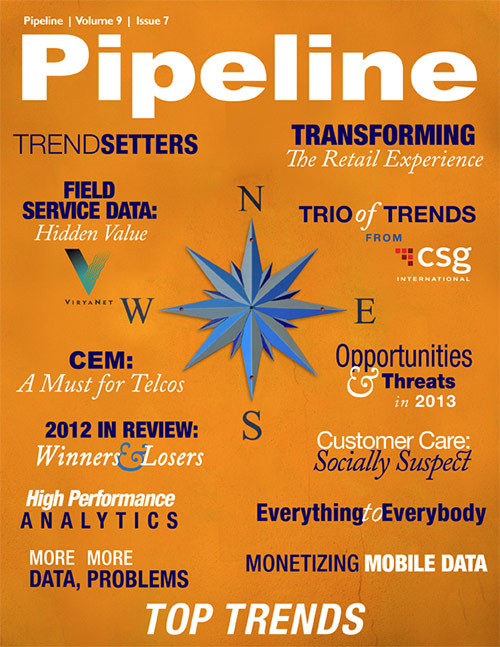Wireless, Broadband, and Wholesale Trends
Residential broadband (cable/DSL): video models, frayed cords and partnerships
Residential broadband providers have become nearly indistinguishable over time. In developed markets both cable providers and fixed-line/DSL providers currently offer a similar suite of voice, data and video services, and many developing markets are making similar strides following the ITU’s digital mandate. This competition for residential consumers stimulates the seemingly paradoxical combination of a greater bundling of services, bringing greater capacity and more content into a single package, and a higher deconstruction of offer elements to ensure that customers maintain some element(s) of your service as they increasingly look to third parties for content. Offer expansions include services along the lines of “TV Everywhere” that enable the customer to transport his or her access and content across devices inside and outside of the home, while offer deconstruction supports trends like “cord fraying,” which combats the more extreme trend of “cord cutting.” Cord fraying involves the customer downgrading his service and spending more of his money on third parties; a recent survey determined that the average frayer pays his cable operator $42 less per month and secures more paid content from third parties.
In the arena of increasing personalization, business systems and a network’s intelligence must combine to react in real time to determine entitlements, quality-of-service requirements and, most importantly for the CSP, how each interaction will be funded. Further, the drive towards bringing more third parties into the residential broadband offer means an increased focus on partner management and settlement.
Conclusion
Taken together, what do these trends and shifts mean? Above all else, there is increasing consolidation and commonality across different network technologies as the all-IP communications environment emerges. In some ways this will bring great advantages, particularly in managing network traffic, but it will also create a wide-open commercial battlefield with few barriers to entry for new competitors and few technical limitations on use, as internet rules begin to supplant those of traditional telecommunications networks. New business models, new partnerships and new types of customer interactions will present challenges but also huge opportunities for CSPs in the future, and they all stand to learn from each other’s experiences as well as the agile movements of new entrants. The coming years promise to be interesting times.



















